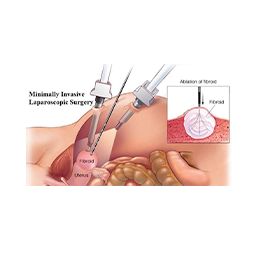
Minimally Invasive Laparoscopic Procedures are surgical techniques performed through small incisions using specialized instruments and a camera (laparoscope). These procedures offer several advantages over traditional open surgery, including reduced pain, shorter recovery times, less scarring, and decreased risk of complications.
1. Cholecystectomy – Removal of the gallbladder (commonly due to gallstones).
2. Appendectomy – Removal of the appendix (typically for appendicitis).
3. Hernia Repair – Fixing hernias, including inguinal and hiatal hernias.
4. Hysterectomy – Removal of the uterus (can be total or partial).
5. Colectomy – Removal of part or all of the colon.
6. Nephrectomy – Kidney removal.
7. Bariatric Surgery – Including gastric bypass and sleeve gastrectomy.
8. Endometriosis Treatment – Removing or destroying endometrial tissue.
9. Adrenalectomy – Removal of one or both adrenal glands.
